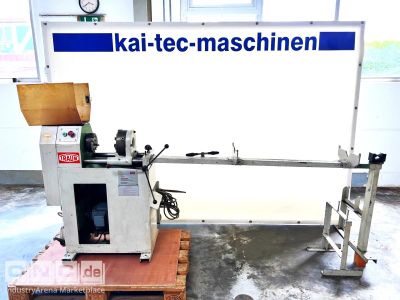Mercado de máquinas e instalaciones usadas
Máquinas usadas Work and assembly tables
Work and assembly tables are special tables used in production, workshop or laboratory environments to facilitate the performance of assembly, repair or maintenance work. Here are some examples of work and assembly tables: Workbenches: workbenches are sturdy tables designed to perform tasks such as cutting, drilling, filing and grinding. They often have shelves, drawers and other storage for tools and materials. Assembly tables: assembly tables are designed specifically for performing assembly work and often have adjustable brackets and clamps to make the job easier. They may also have integrated power supplies or compressed air supplies to run tools or machinery. Height-adjustable tables: Height-adjustable tables can be adjusted to work at different heights, allowing for a more ergonomic working position and preventing back discomfort. Laboratory tables: Laboratory tables are designed for work in laboratories and scientific facilities and often have special surfaces that are resistant to chemicals and other substances. Electronics workstations: Electronics workstations are designed for working on electronic equipment and components and may have specialized equipment such as soldering irons, multimeters and other measuring devices. Heavy-duty tables: Heavy-duty tables are designed for working with heavy materials or components and may have a higher load capacity than traditional work or assembly tables. Cutting tables: Cutting tables are designed to work with cutting tools such as saws or knives and may have special supports and guards to minimize the risk of injury. Work and assembly tables can also be customized to meet the specific needs and requirements of an industry or company to increase the efficiency and safety of the work environment.

|


|


|


|


|


|


|


|


|


|


|


|


|


|


|


|


|


|


|


|


|


|


|


|


|


|


|


|

|
Ninguna fotografía disponible |

|
Ninguna fotografía disponible |











